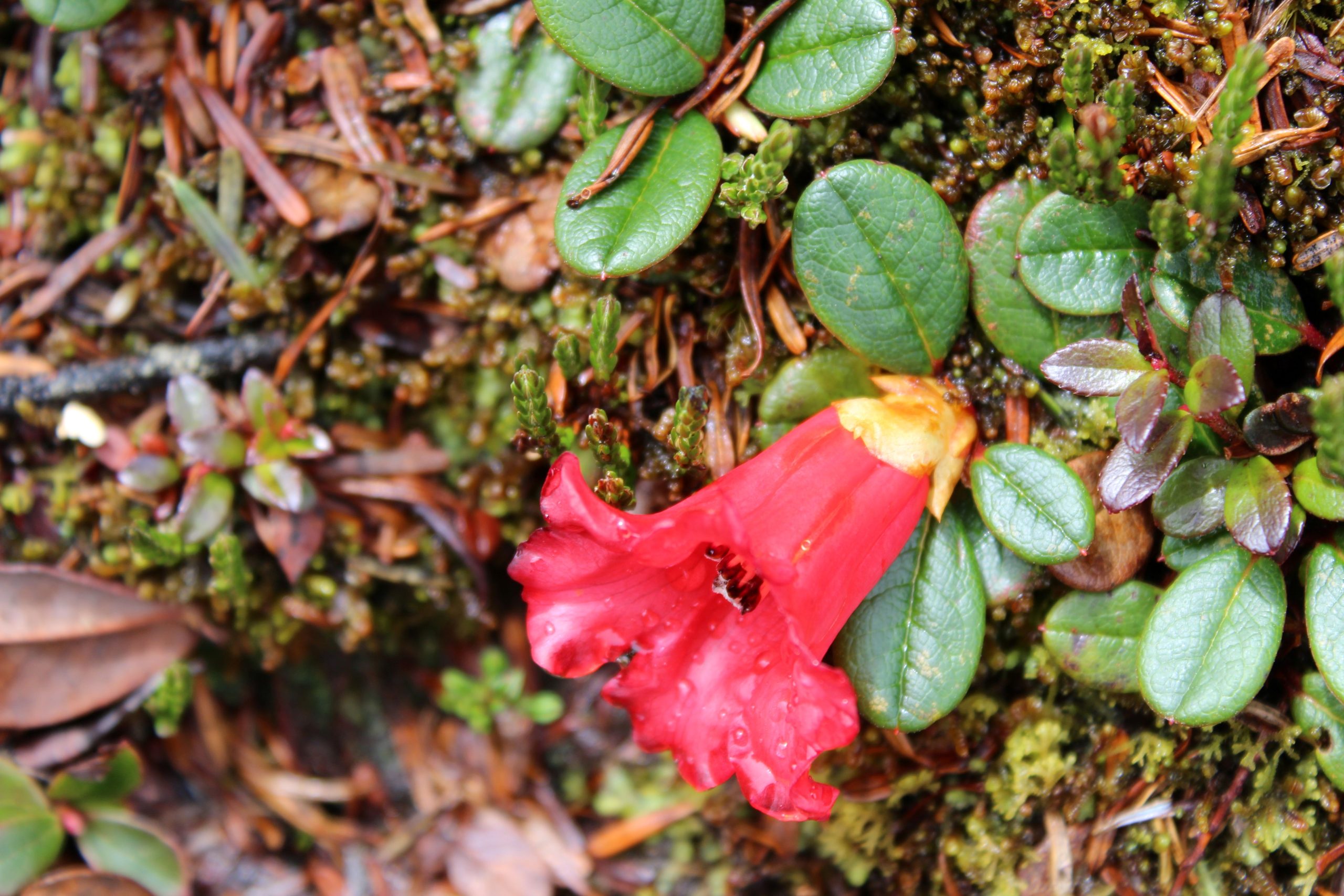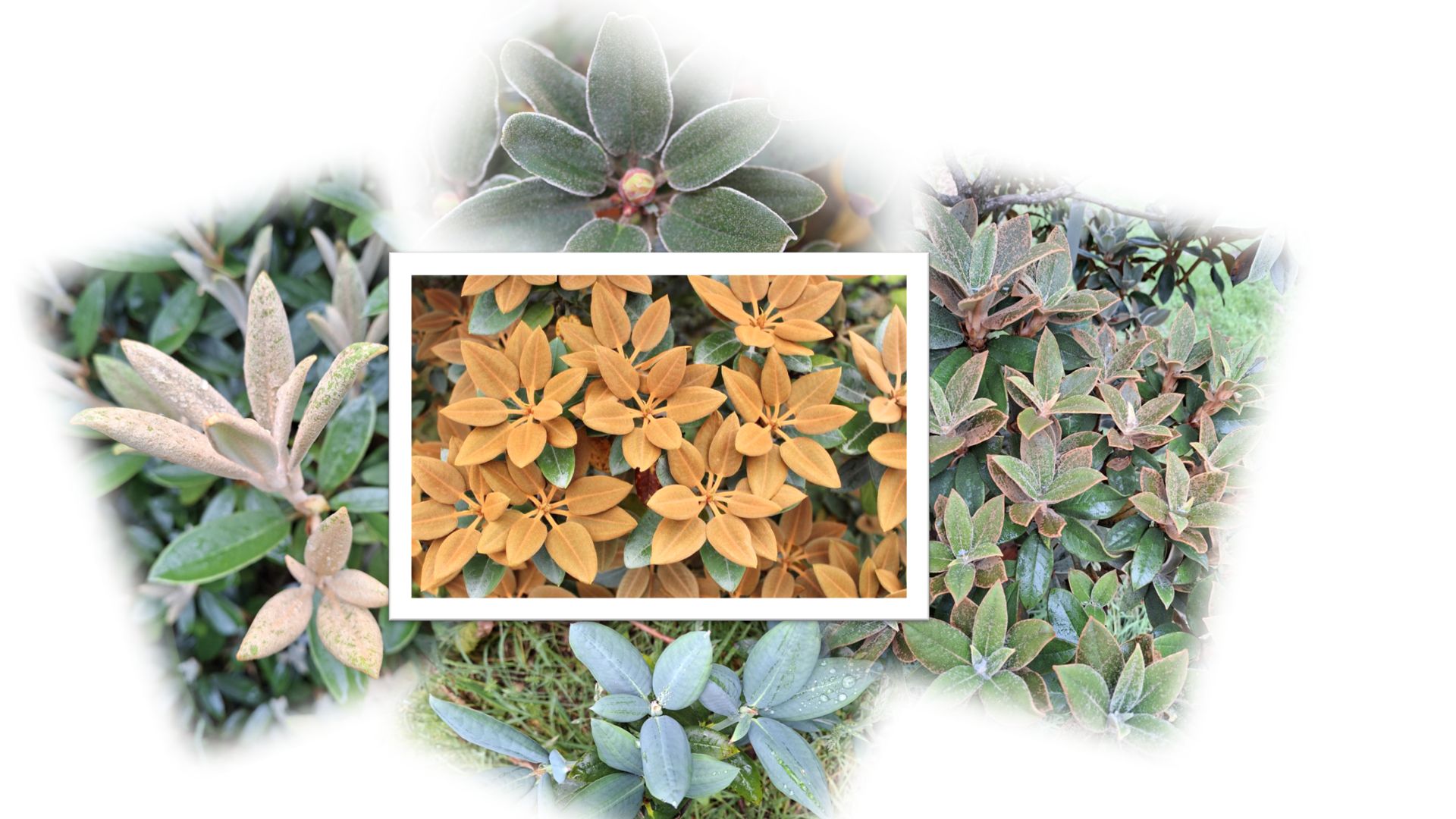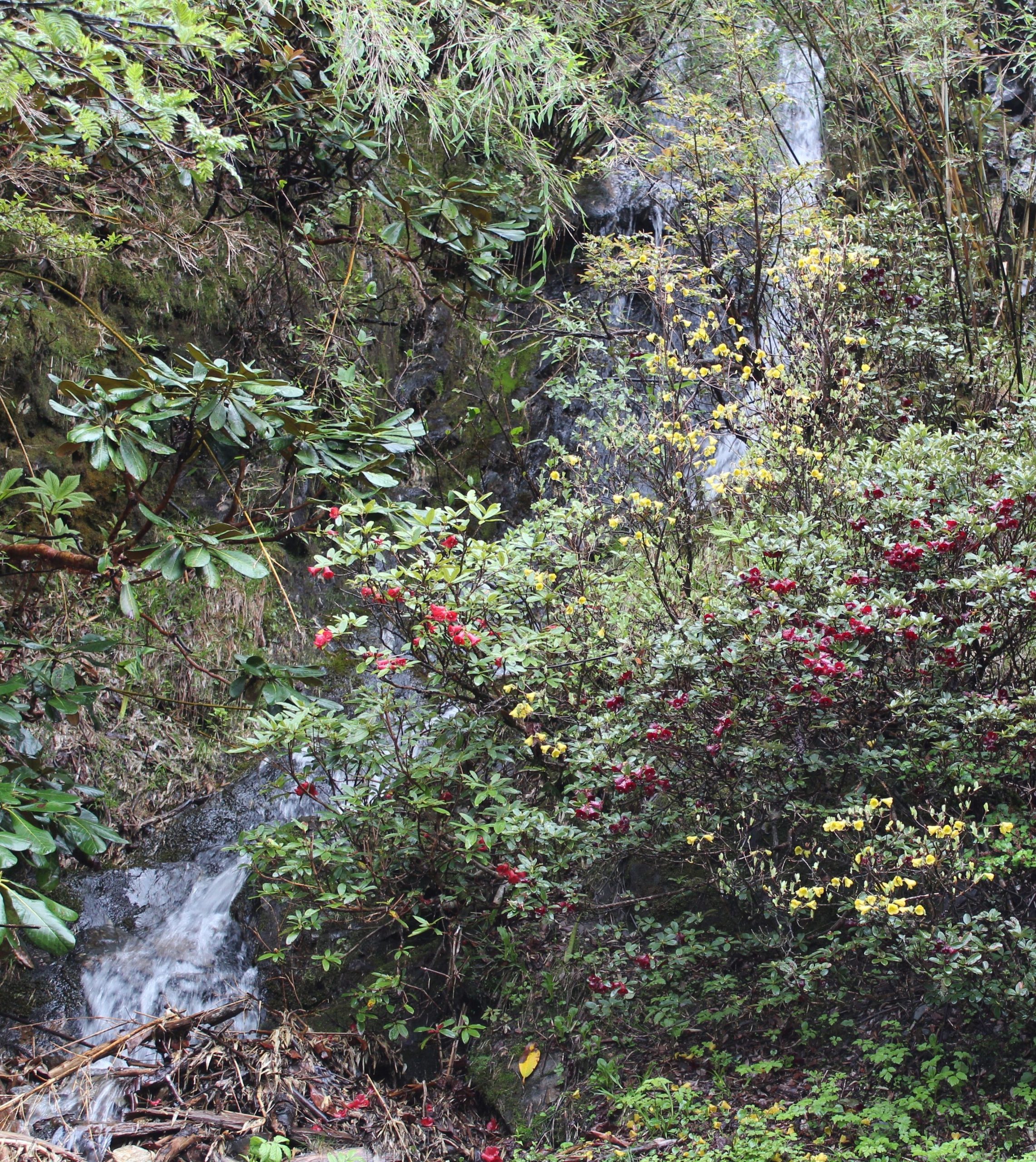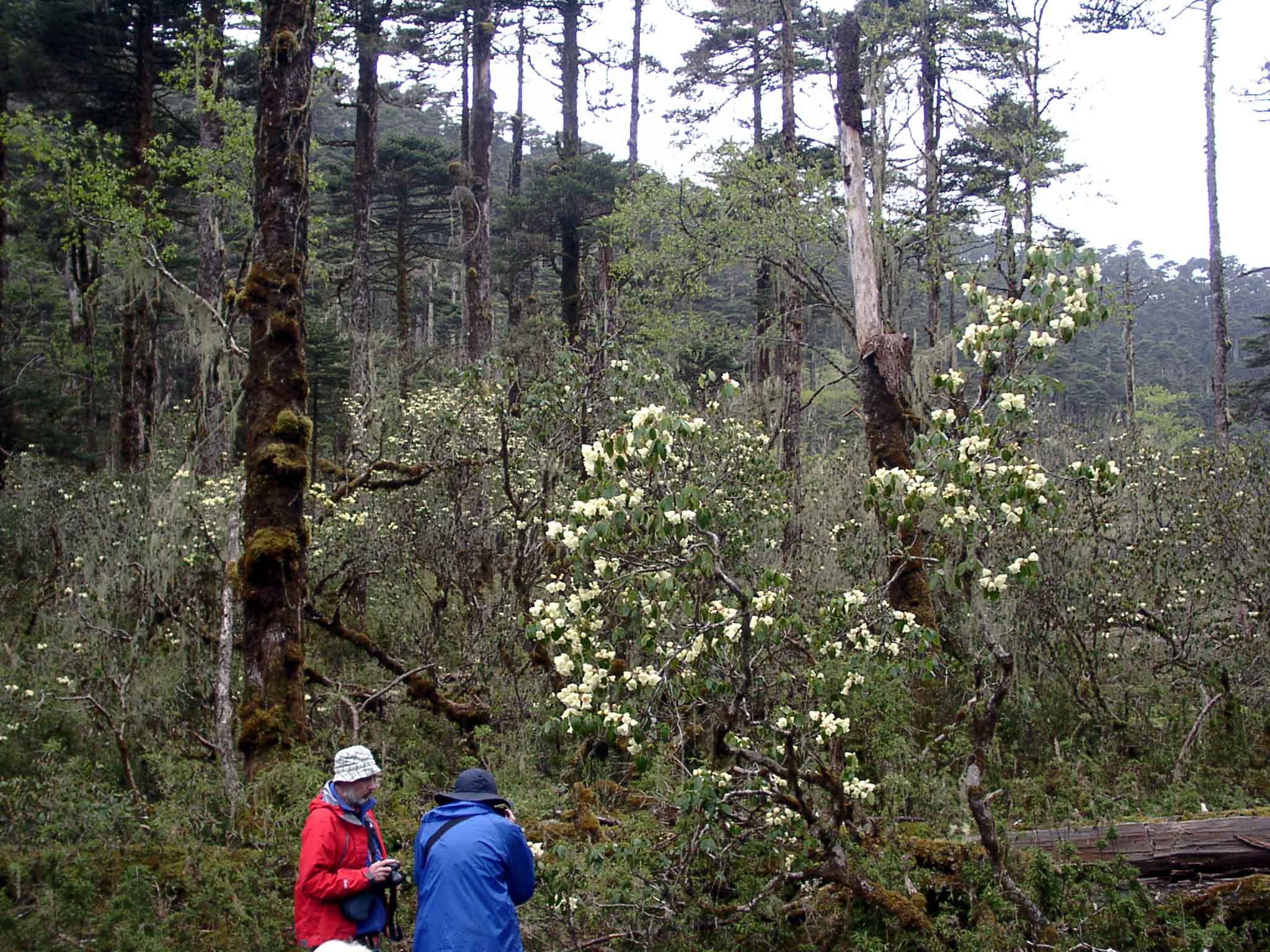The World of Rhododendrons by Peter Cox V.M.H.
How many individual garden plants can give us tiny creeping alpine shrublets with leaves half an inch long, to one hundred feet trees with leaves up to three feet long and flower colours from white, through yellow, orange, pink – to violet, blue and scarlet. Only the Rhododendron !

So many people think of Rhododendrons as being just middle-sized evergreen shrubs, with purple or pink flowers and are surprised when they hear that there are actually yellow flowered ones, scented ones, tropical ones, multicoloured ones and dwarf ones. There are literally hundreds of different wild species of Rhododendron found in forests, stream sides, moorlands, rocks and even in the edge of water or growing upon another plant ! They may be found in tropical rain forests, to the Arctic tundra. The foliage variation has to be seen to be believed. All shades of green abound, often silver to metallic blue to rufous brown when young. The leaf undersides often hold the greatest surprises. From smooth and shiny white through pink, buff, and copper, to cinnamon and chocolate and often covered with hairs or thick spongy wool.


The flowers are even more diverse than the leaves. The little alpine species cover mountain tops in south-east Asia – like heather does in Scotland; only with Rhododendrons, the variety is so much greater. Imagine a whole hillside covered with a sea of lavender-blue, interspersed with snow-white mounds, while beyond on another hillside, the white mounds are replaced with larger yellow hummocks. Away below, the alpine valley is dotted with a patchwork of pink. This is not a picture of the imagination. I saw it with my very own eyes, while in south-west China in May, 1981 and all those colours were Rhododendrons in full flower.
Four thousand feet lower in the forest, stood a giant of Rhododendrons. Moss-covered trunks arose from our feet and up against the sky were huge bunches of leaves, like elephants’ ears. Above the leaves were enormous trusses of creamy-yellow flowers, best viewed across the ravine, where they glowed out of the mist. Another species had a completely smooth pinkish-red trunk, often without a branch for twenty or thirty feet, and topped with masses of scarlet flowers. Above these two giants on the top of the low ride,, was a third species with rounded leaves, Cinnamon-coloured above and below, and the tight trusses of clear pink flowers just beginning to open.
Such is the glory of the Rhododendron in the wild. These species and hundreds more, have been gathered by plant collectors and brought back to gardens where they can be grown together in their infinite variety. You can see that the wild species are my favourites. Each has its own special characters – perhaps its foliage, flower shape or colour or scent, habit or special bark; sometimes all these on one plant. Many species vary too. One I saw in Nepal with waxy tubular flowers, could be red, orange or yellow and all growing together.

In cultivation, many crosse have been made, in attempts to widen the range and to improve on their garden value. Literally thousands of these man-made hybrids have been raised, some good, others only fit for a bonfire. Like raising any plants for ornamental or food purposes, we have to be ruthless in making our selections and only keep the very best. New hybrids are are being produced in all the major Rhododendron-growing areas of the world – North America, Europe, Japan, Australia and New Zealand. Each area raises plants to suit its own climate and soil conditions. Hybrids are produced for every need, from the tiniest alpines, to big-leaved blousy-flowered giants and all have their own place in the garden, depending on its size and whether in a prepared bed or woodland. Hybrids are generally easier to grow, and flower more freely from young plants than their species ancestors, but often lost perhaps some of the distinctiveness and charm of the wild plants. Many new colour breaks and combinations are being offered, many in startling hues. Why not try hybridizing yourself? Imagine the anticipation of waiting for the first flowers to open on one’s very own creation.
By Peter Cox,
Peter Cox was a founding member of The Scottish Rhododendron Society and is globally respected as an authority on the genus rhododendron. Find out about the Lifetime Achievements of Peter Cox here.
